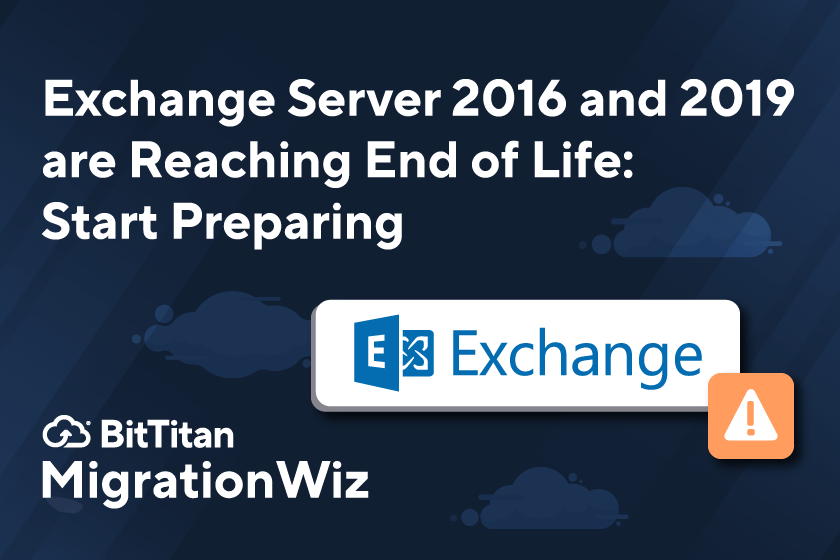This is Really Happening: Exchange Server 2016 and 2019 End of Life
If your organization is still using Exchange Server 2016 or older versions of 2019, it’s time to say goodbye for good. You’ve probably seen the update announcements, the timelines, and the notifications. Perhaps you thought Microsoft would give you one more extended deadline. But this is really it – as of October 14, 2025, Microsoft will no longer provide security updates and support for the Exchange Server 2016 and versions of 2019 up to CU13 (cumulative update 13). BitTitan is here to help you get prepared.
Don’t let your organization be left behind, outdated and vulnerable. The risk of hanging onto your old software is just too high.
What You Risk Staying on Old Exchange Software
If you play a part in managing your organization’s IT infrastructure, you’re responsible for a lot. You surely don’t want to be responsible for entirely predictable – and extremely costly – risks like:
- Security breaches: End-of-life means you’ll no longer be receiving security updates. This leaves your environment vulnerable to attack from hackers who will be on the prowl for companies that have fallen behind.
- Compliance issues: If you’ve got regulators – and who doesn’t these days? – they’ll be looking for proof that you’re following modern security standards. Outdated software is a great way to get the wrong kind of attention from regulators.
- Functionality limits: There’s nothing like that feeling when some hot-shot in your organization finds out about a new cool feature and you have to explain why they can’t have it. Failing to update Exchange Server can cause you to miss out on new functionality that could improve your team’s productivity and collaboration.
Time to Make Sure You’re Current
If you’re using Microsoft Exchange Server 2016 or 2019 (CU 13 or earlier), you’ve got a couple of options – one of them is not ignoring the issue and hoping it goes away. You can migrate to the Microsoft 365 cloud, upgrade on-premise to prepare for Exchange Server SE (Subscription Edition), or migrate to a hybrid scenario. MigrationWiz can help with any of these options.
- Move to the cloud with Microsoft Exchange Online in Microsoft 365: This will provide your organization with a secure, scalable, and feature-rich cloud-based email system with minimal IT burden.
- Upgrade to prepare for Exchange Server SE: The subscription edition is expected in Q3 2025. In order to prepare, you’ll need to update your on-premises server with the latest version of Exchange 2019 and remove any Exchange 2016 servers from the environment.
Make these changes now, and you’ll be ready for a smooth transition to Exchange Server SE in 2025.
The Deadline is Upon Us
Whether you plan to do it in-house or with the help of an IT service provider, if you’re on old versions of Exchange, here’s what you need to do:
- Assess your environment: Be sure you know what version or versions of Exchange Server you’re running. Assess your business needs to decide whether it will be best for you to upgrade to the current Exchange 2019 in anticipation of Exchange Server SE, or if moving to Exchange Online is your best option.
- Review your licenses: Understand what licenses you need for the option you decide on, and ensure your licensing is up to date and compliant with the requirements.
Microsoft has provided documentation on their website with details about Exchange Server options, timelines, and next steps. There you’ll also find their updated roadmap, definitions, and answers to questions they’ve received from customers (FAQs).
The risk of remaining on an unsupported platform is just too high. Minimize the risk to your organization by moving to the most current version of Exchange Server 2019 as soon as possible. MigrationWiz is here to make the transition as smooth as possible. To get started, please contact our team or head over to our pricing page to view our licenses.


